Speculative Triggers: S.O.S. Chairs
Off of Mexico Platz, up Argentinische Allee. Zehlendorf, Berlin is a part of town that takes you back in time.
Old villas in spring. Mothers pushing designer prams a la 1920s—shiny steel and blue sunroof. Mom-andpop shop style—Tante Emma Laden—sausage, fruit, and vegetable market and kiosk welcome you at the S-Bahn.
The Haus am Waldsee* is an esteemed cultural institution with a history of trading hands. Originally acquired by a German-Jewish entrepreneur—a Mister Knobloch—and sold in 1926, the villa was taken over during National Socialism. In post-war Germany, the Jewish Restitution Successor Organization inquired about reparations, receiving documentation of the prewar sale. Now, the district has declared the house German cultural heritage. Fancy caramel cake and frothy coffee are to be had and framed proof and praise of great men (Picasso, Henry Moore, Max Ernst) hang on the cafe walls. A new normal.
Currently on view at the Haus am Waldsee, the notorious industrial designer and international superstar Konstantin Grcic comments on how design and New Normals intertwine. His first solo institutional show in Berlin, the exhibition consists of futuristic environments, reoccurring classics such as the Mayday (1999) lamp meet upon new furniture scenarios. In pastel and neon tones and quirky material pairings, each scenario opens up a world of speculation. The new normals of each environment are numbered, and the Mayday lamp appears in every room. Enter the futuristic playground.
MAYDAY?
The Mayday lamp was one of Grcic’s first commercially successful projects. It hangs like a fire extinguisher in every room. Like a gumball machine on the street to interact with. Here, to reflect, alarm, and shed some light on this critical moment in our times. A red neon element that ruptures the smooth, sleek designer surfaces. It is a functional leitmotif. Its versatile attributes are what garnered its popularity. Handle. Hook. The lamp is a tool and redefines the typology of a lamp, named after the emergency call for alarm when the Titanic sank. MAYDAY—when you are in trouble. Entitled Normal 0 within the exhibition, its presence calls out in every room: “M’aider”. Save our souls.
Normal 1-14
Though not explicitly about Covid, it is impossible to view these works of furniture without seeing them in the context of the pandemic and social distancing. Beautifully industrially designed chairs are a reoccurring structure on this exhibition route. Meant for use every day, but thanks to some futuristic disaster, these chairs seem blocked. The friction manifests in chained chairs. Chained up with neon orange bike locks, bound with gymnastic straps. Chairs with television and radio satellites, chairs hanging from the ceiling, chairs as benches, tables without chairs. Stools in group formations. From these chairs in our home offices, we change the world. Swiping, posting?
“Do not sit or touch the designer chairs”, the house advises. The tension of not being able to interact with these social formations is palpable.
In comparison, the Haus am Waldsee offers viewers a chair in the corner of each room to sit on, and imagine sitting on the Grcic’s chair scenario. Now, this might seem somewhat cruel at first glance, but this is when the imagination begins to play tricks on you. The players who should be resting on these seats are ghosts in this furniture land. It is like downloading a hallucination.
Case in point, Normal 15 is made of surveillance LEDs, cables slithering towards and hooking up like rattlesnakes to a center stone. Red stools with little trays to catch something and to commune around the center stone. Silent and immobile, animism is projected onto the site. Is this a challenge out of the Squid Game—the Korean sci-fi Netflix show that got us through the pandemic? Dare to play and perhaps riches await, lose the game—well—die.
The architecture of the house converses with the chairs and the tiling and hardwood floors. You cannot look out of the milky glass windows. This removes the experience from our sense of time and place. Whose living room is this? Who sits or will sit on these chairs? Do we want to sit on these chairs? Are we jealous of whoever gets to sit on these chairs?
Have you settled for this new normal? Have you gotten used to this status quo? Are you used to this lifestyle? Is this comfortable? Or, is this all we know? Is this the new domestic life? Is this a dystopian or utopian sci-fi soap opera?
These chairs set standards.
Normal 5 — Champions Table
Does high society come together at this table? Judy Chicago dinner of mirrors?
Always keep your neighbour in your side-view mirror.
Sleek glass table. Society flexes its respectability and reflecting capabilities.
No chairs. Can everyone stand at the bar?
Normal 10
—It’s not spinning, but it looks like it should.
360-degree chairs. Dead or alive? You spin me right round baby, like a record baby right round, round, round. A blinking light underlines the sense of uneasiness. Are we spinning into a new future of digital and industrial possibilities?
MAYDAY …
Normal 14
A fleshy-looking pink Yoga ball, trapped in between two plushy sofas pushed together, a net hangs from the ceiling. Yoga balls are like a meme for neoliberalism:
Breathe in and relax, now, work harder!
The environment is like a deconstructed ball pit, with one big ball.
Out of all of the seating arrangements, this sensual installation could be perhaps the bedroom in this nonhouse am Waldsee. What types of play happen on these crimson cushions? Is it a trap, cage, or pleasurable haven? The world is your oyster after all … unless catastrophe strikes, your privileges are lost.
Normal 12
Golden upholstered dentist-like lounge chair. Phone holders all around. Is this an influencer’s dream or a torture device? Gen Z TikTok stars, schooling the world from the comfort of their lounge chairs. There is even a little side-board built-in for a glass—perhaps a protein shake. This lounging device is cold and rich, like most things connected to our phones. Somehow luxurious and mean. We live in inspiring and terrifying times. Digitization is understood as forward-thinking. Digital and technological platforms afford extraordinary immediate ways of sharing, producing, uploading, exchanging, communicating. On the other hand, totalitarian forms of assembly, pay-walling, data collection, and discriminating surveillance challenge our user safety.
MAY DAY!
Grcic’s work has become renowned for its aesthetic minimalism and multifunctional features. There is a certain ambiguity to each case study he sets up. This makes them indefinite spaces for projection. Aesthetic, certainly … dangerous normals, perhaps … It seems time has come to a stand-still in the exhibition space. The modular items connote flexibility, keeping an open mind both materially and relationally despite irritation. Visitor’s feedback in the guestbook shows that the imagination is activated with propositions for more chairs such as The Whiskey Sour Chair, The Love-Making Chair, The Spider Chair.
How did we get here, to this new normal? Are these singular episodes? Proof that there are continuities? A call to get up off of your chair. A silent state of alarm. Did we miss the warning signs? Grcic depicts experiments in an insecure future: speculative triggers for world-making.
This text was first published in Lerchenfeld No. 61.
Nina Prader, born in Washington D.C., is an artist, writer, curator and independent publisher between Berlin and Vienna. She runs Lady Liberty Library and Showroom. The work Soft Construction by Valentina Karga (Professor of Design at the HFBK Hamburg) and Mascha Fehse is currently on view there.








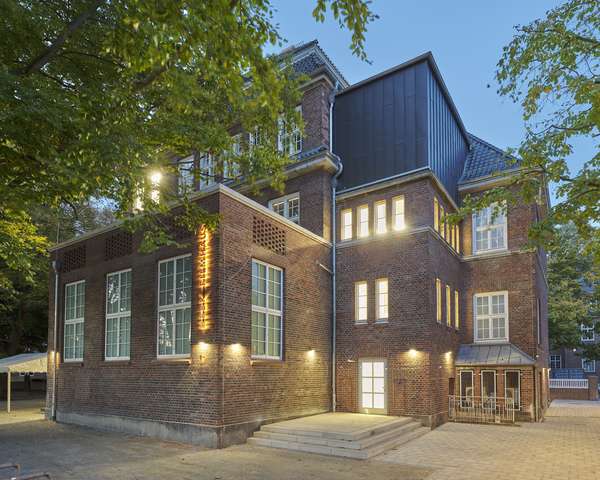







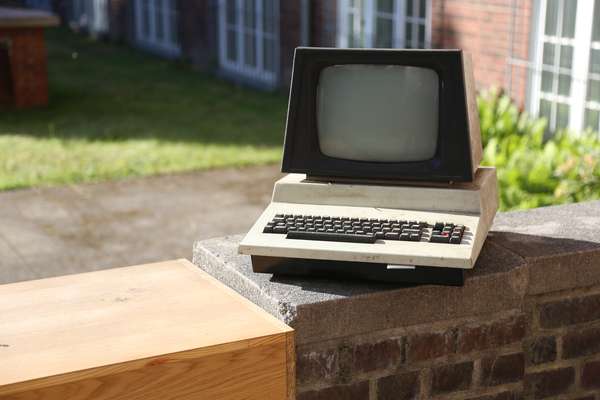

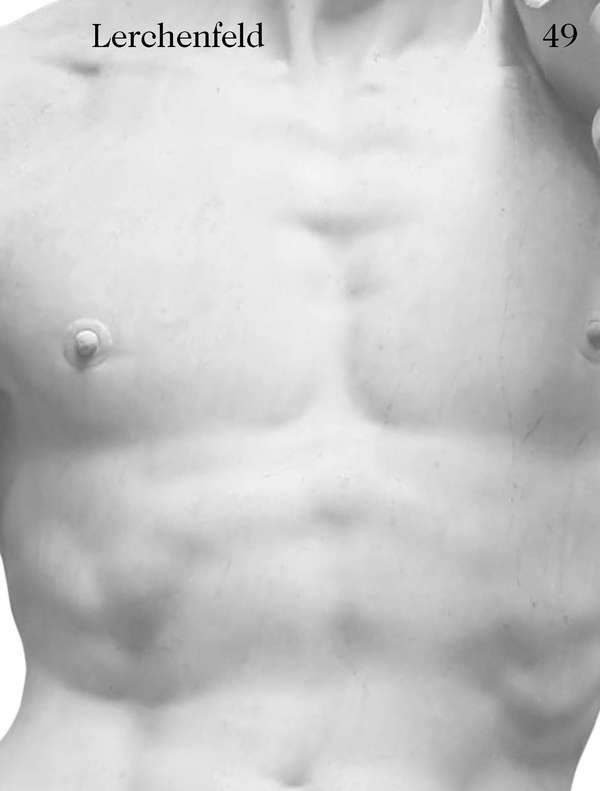




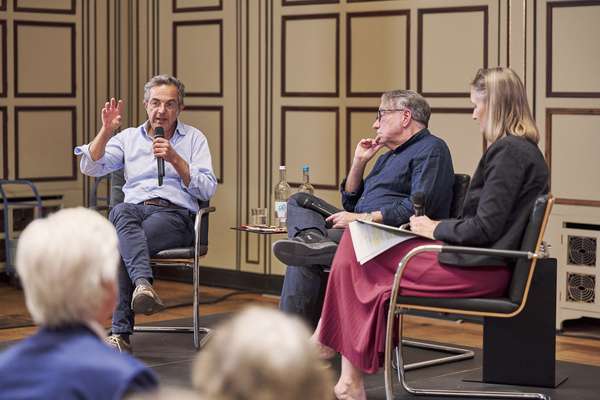









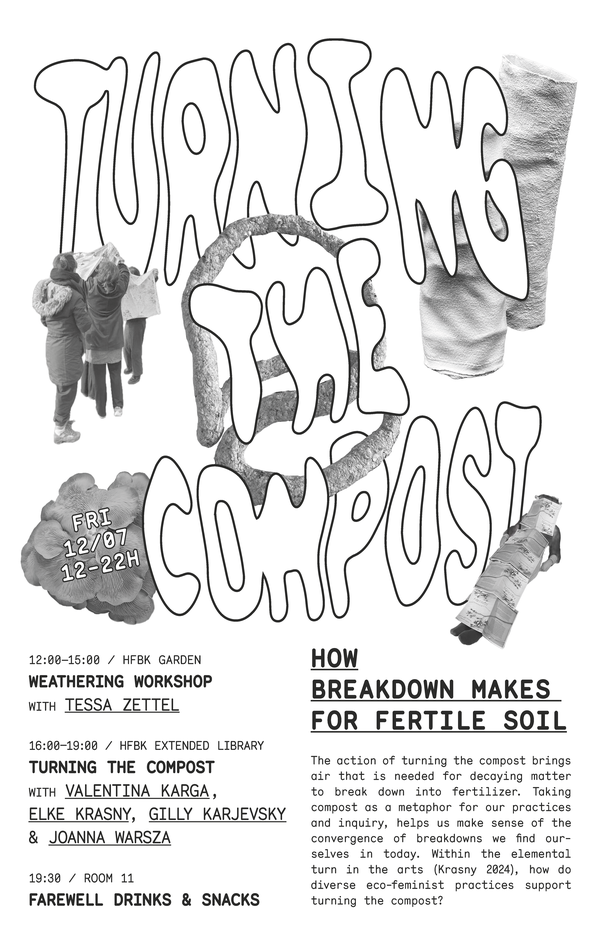

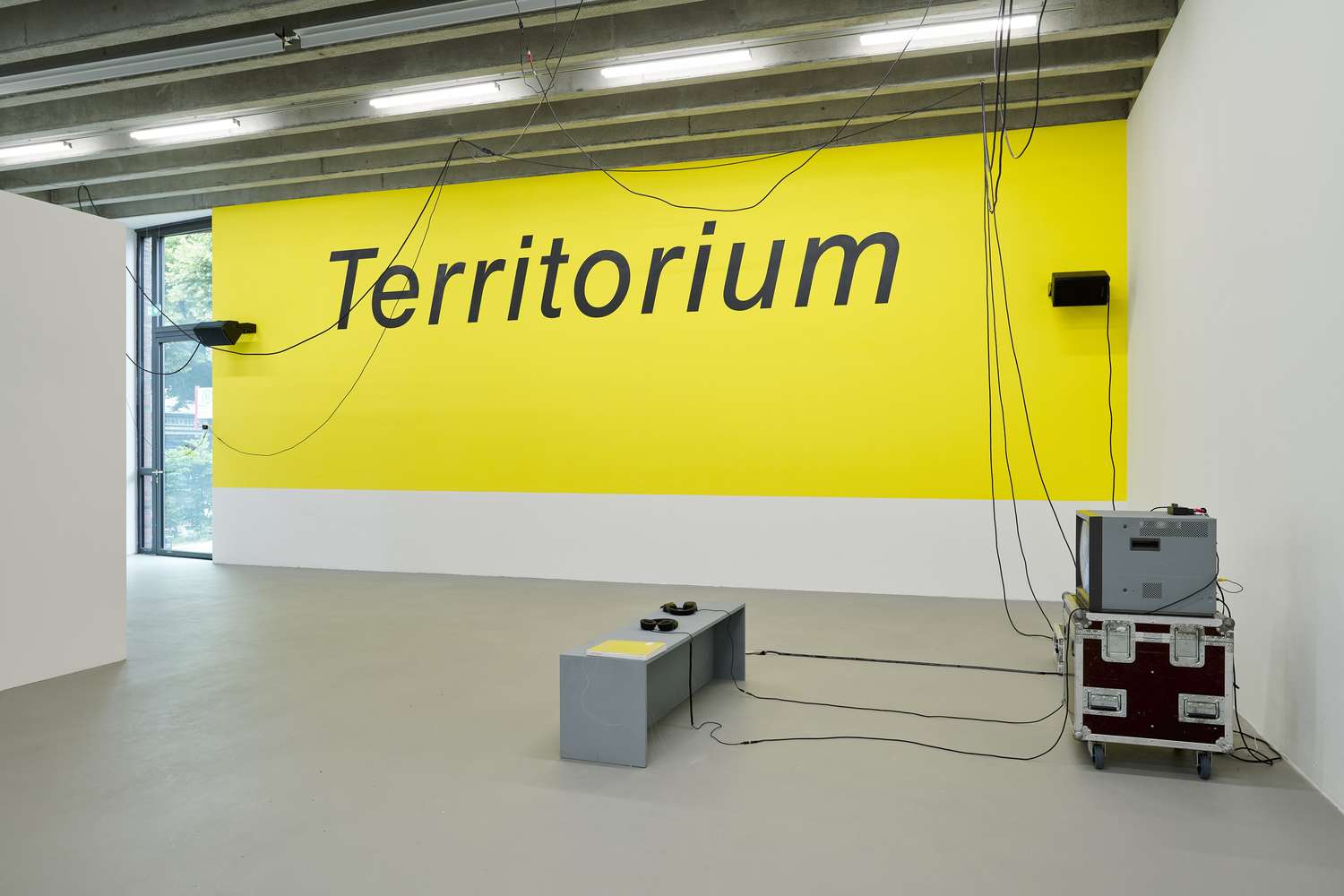



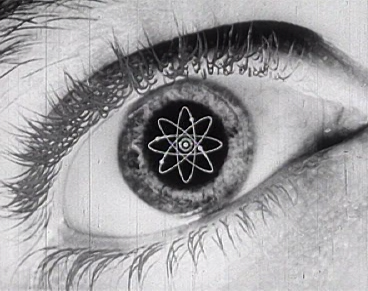
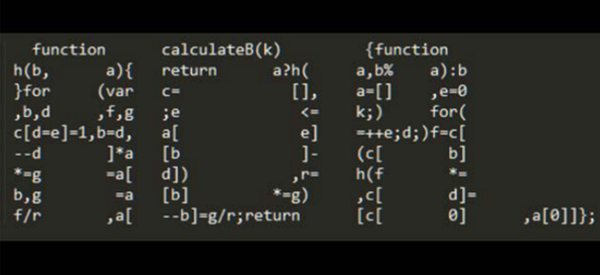




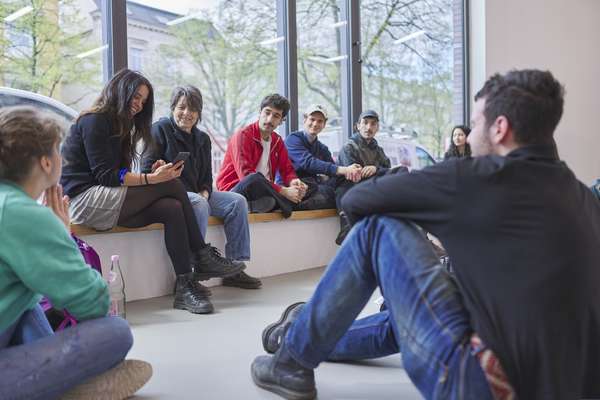

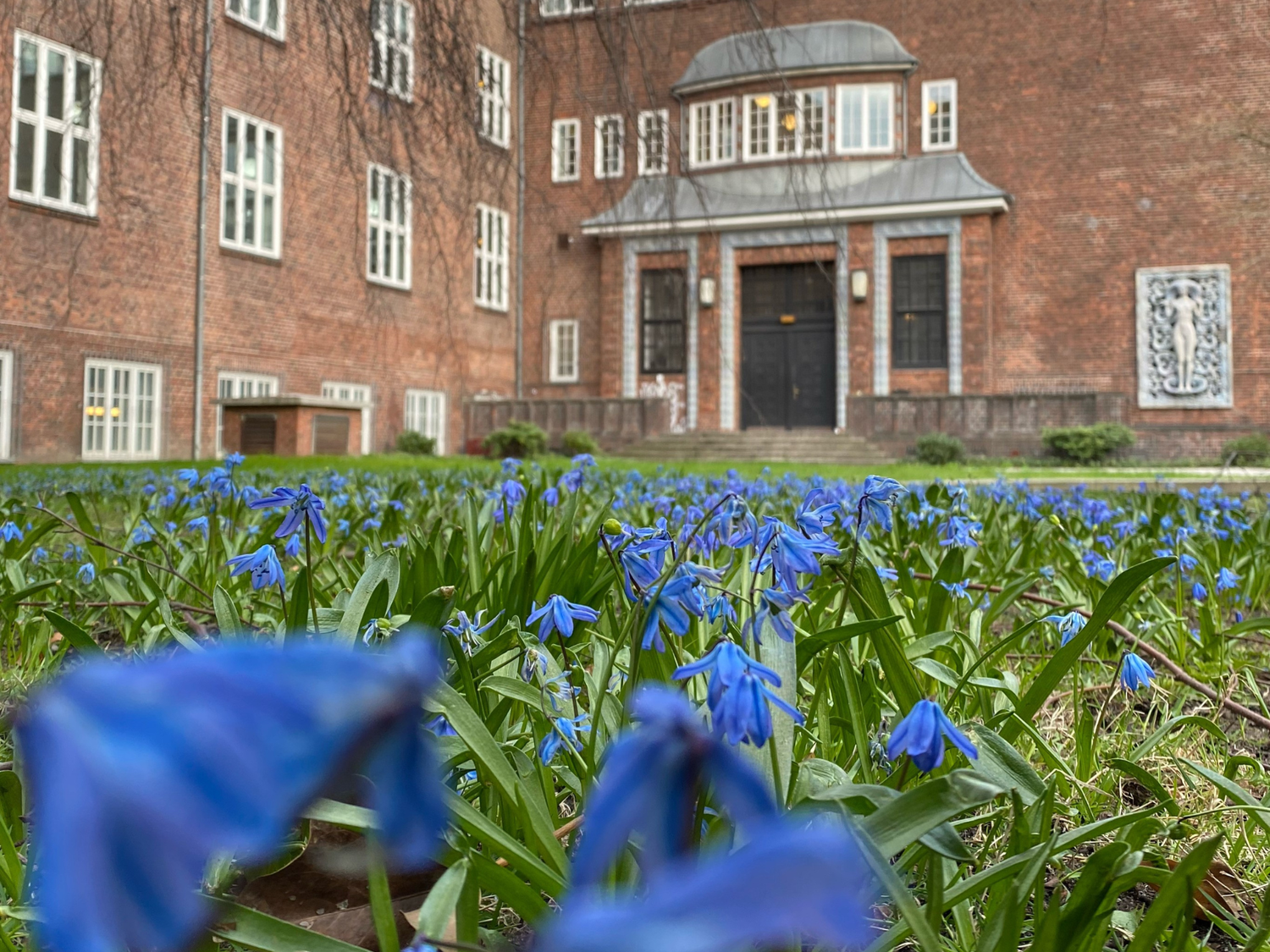



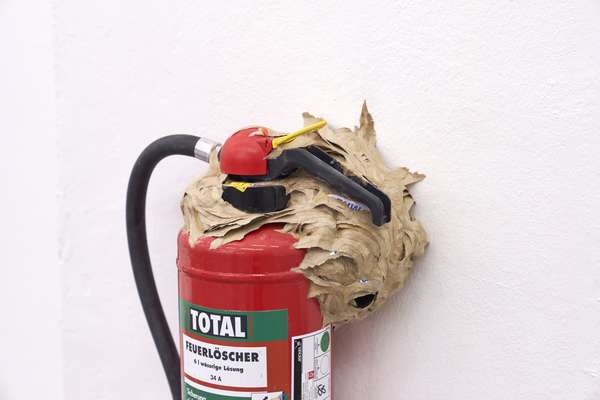
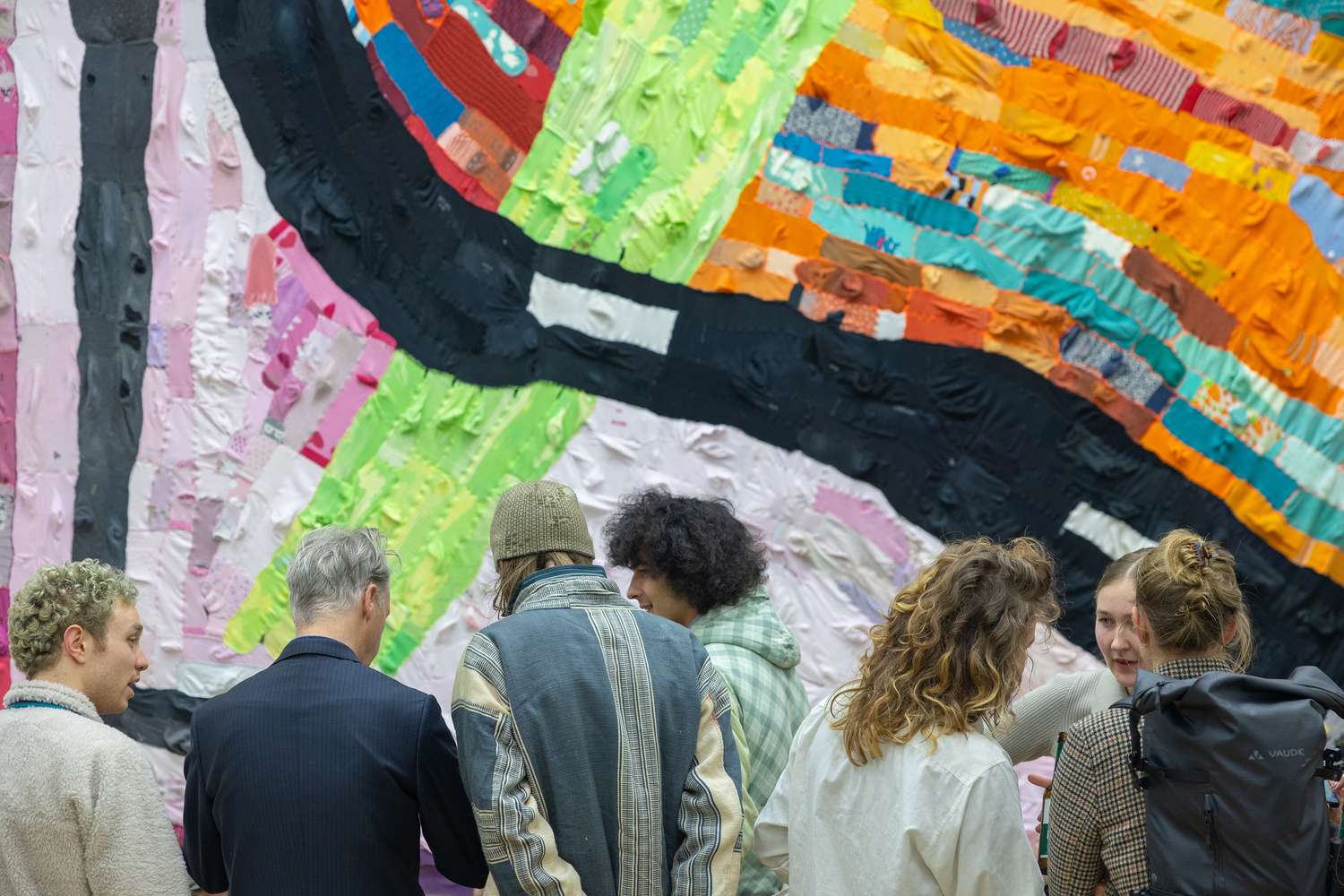






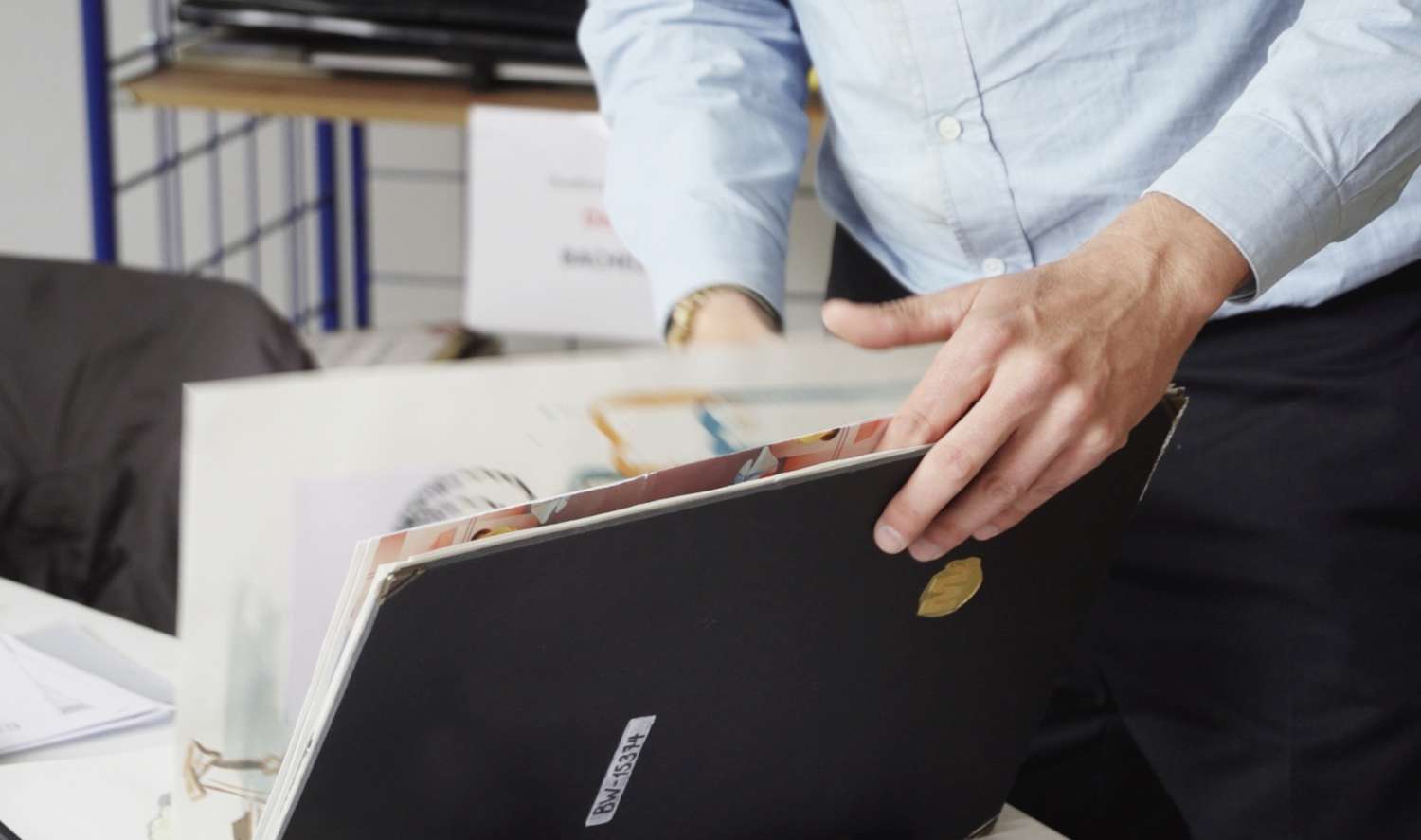




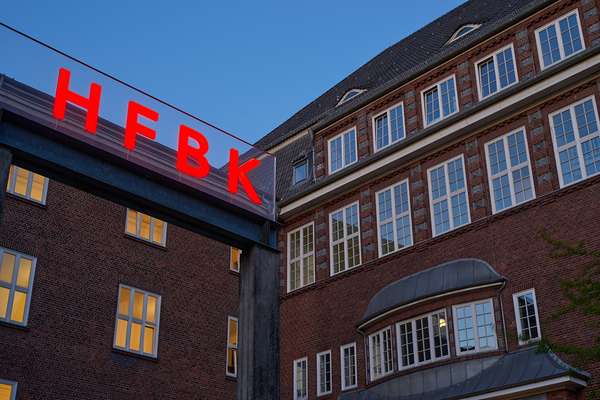







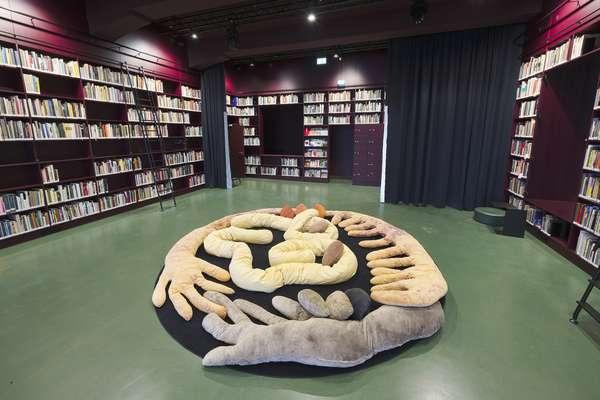







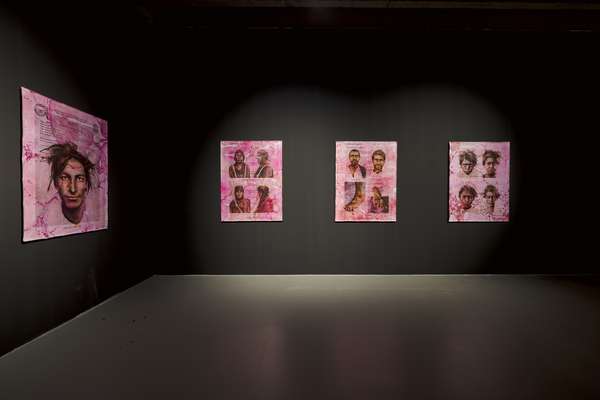


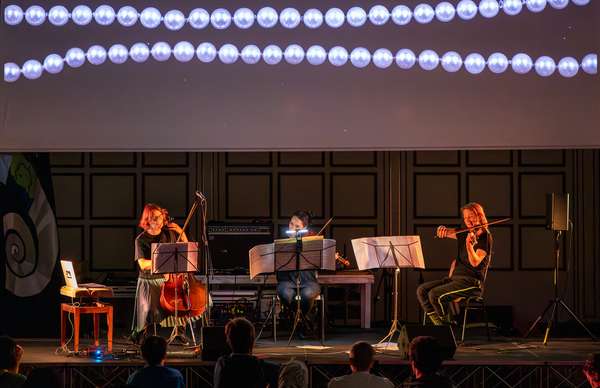











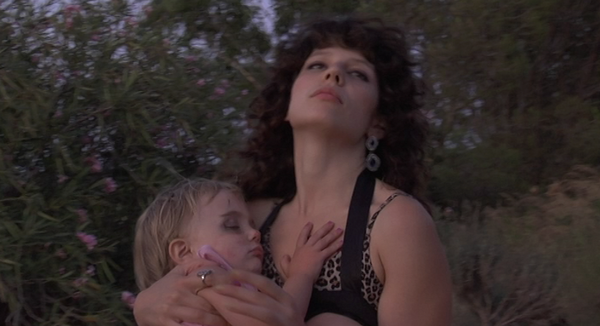






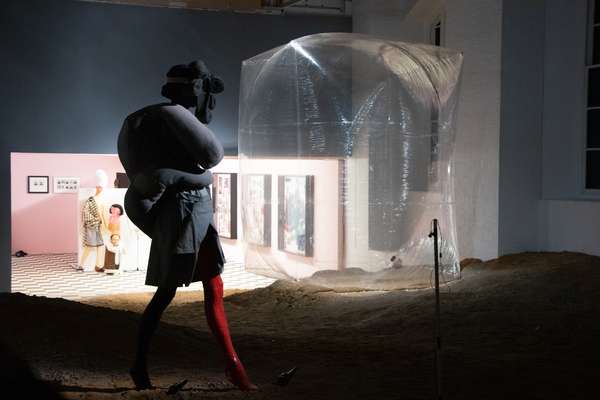







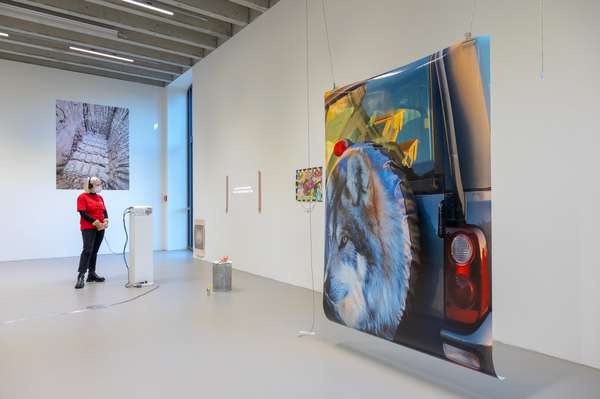







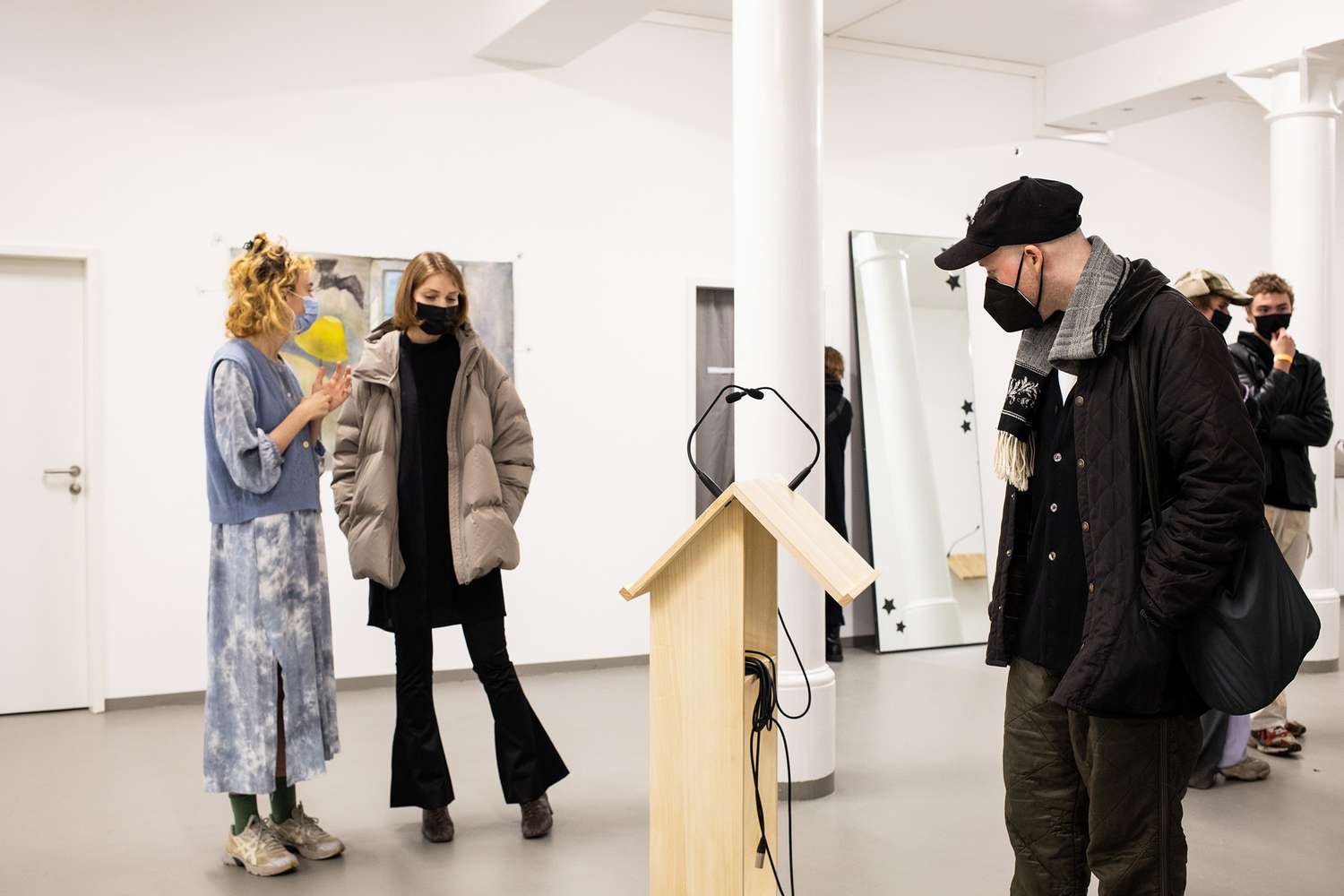






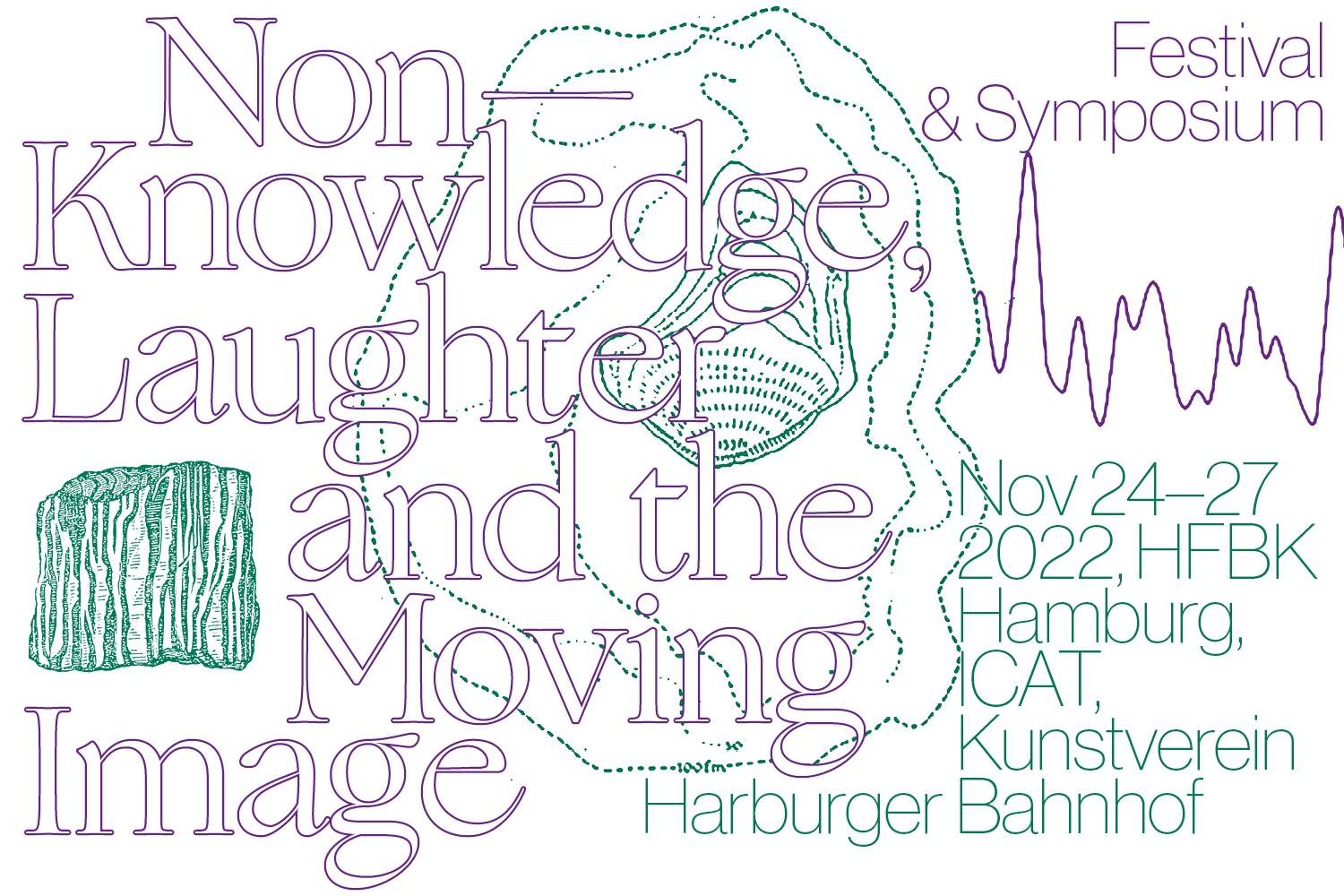






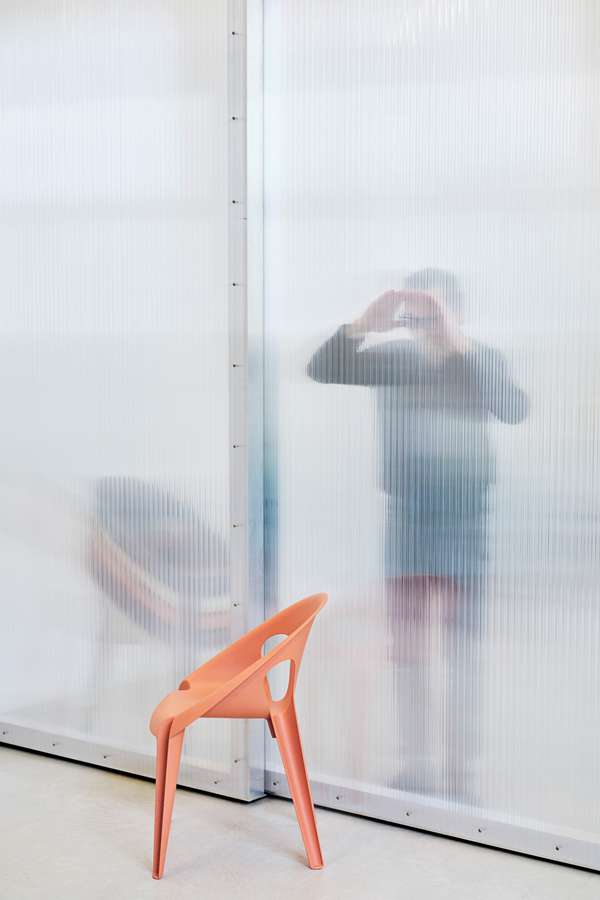






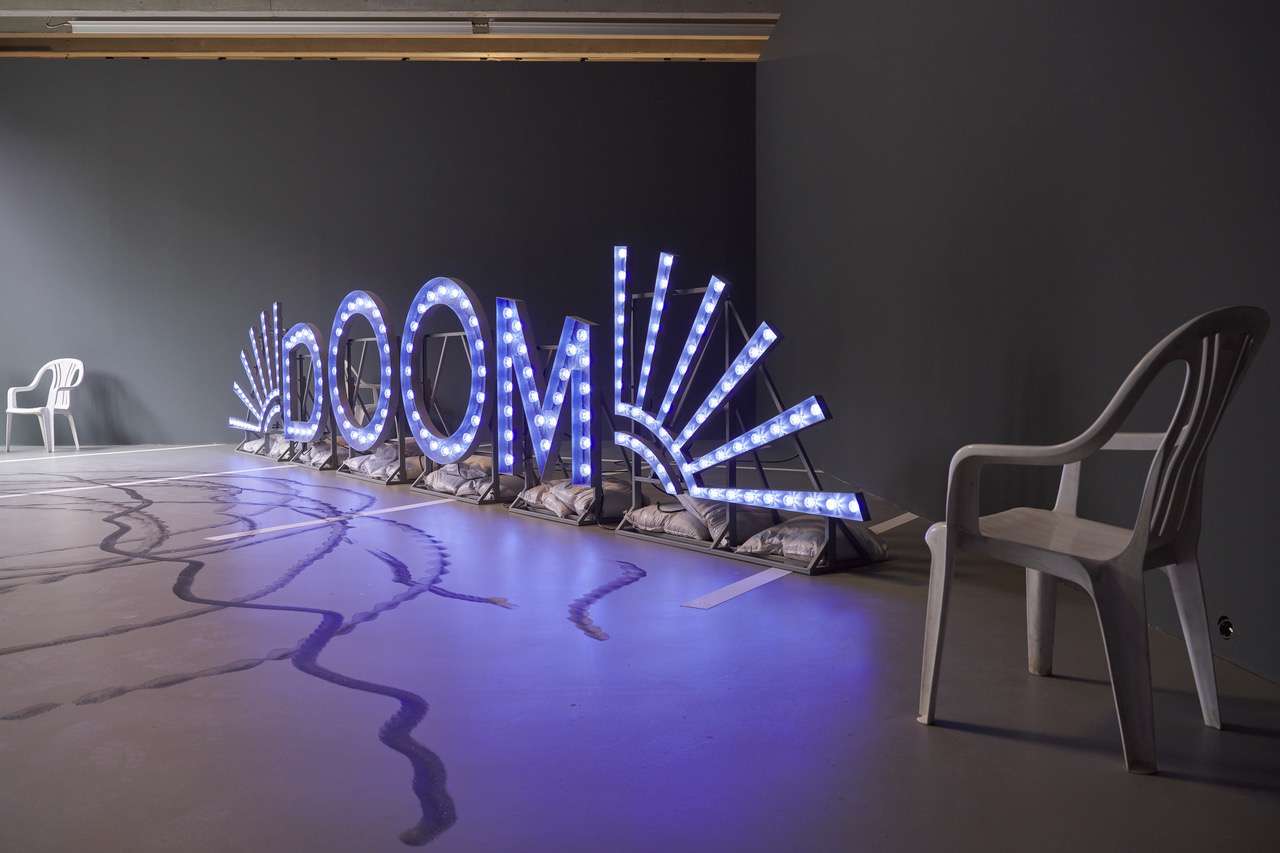
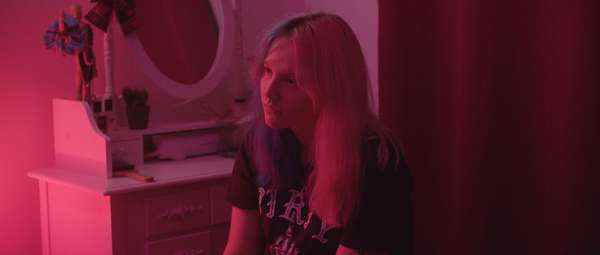









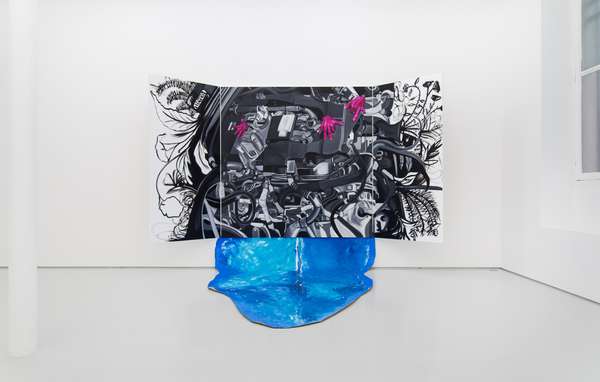






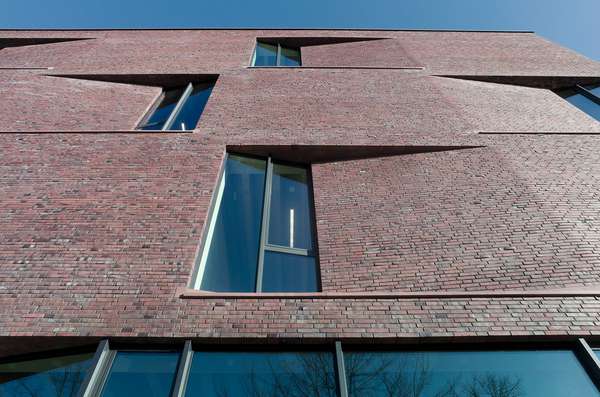






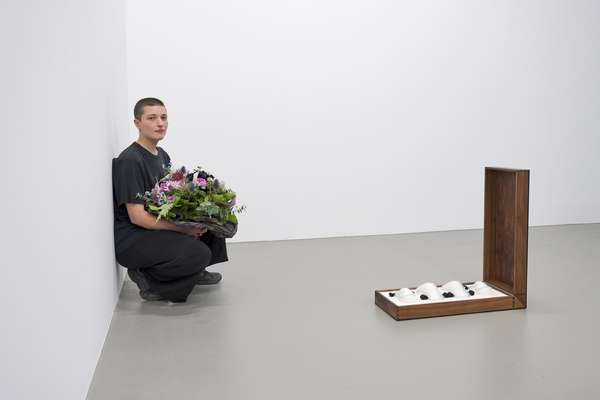
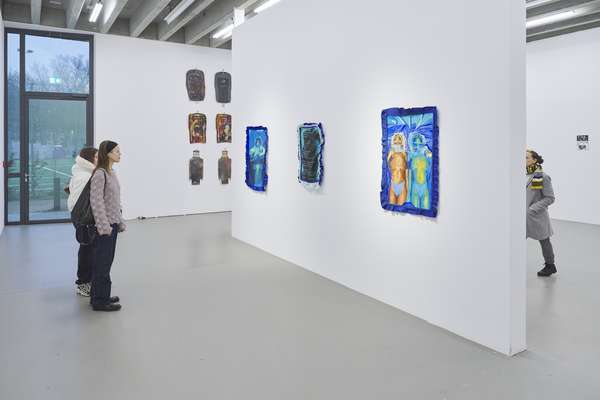




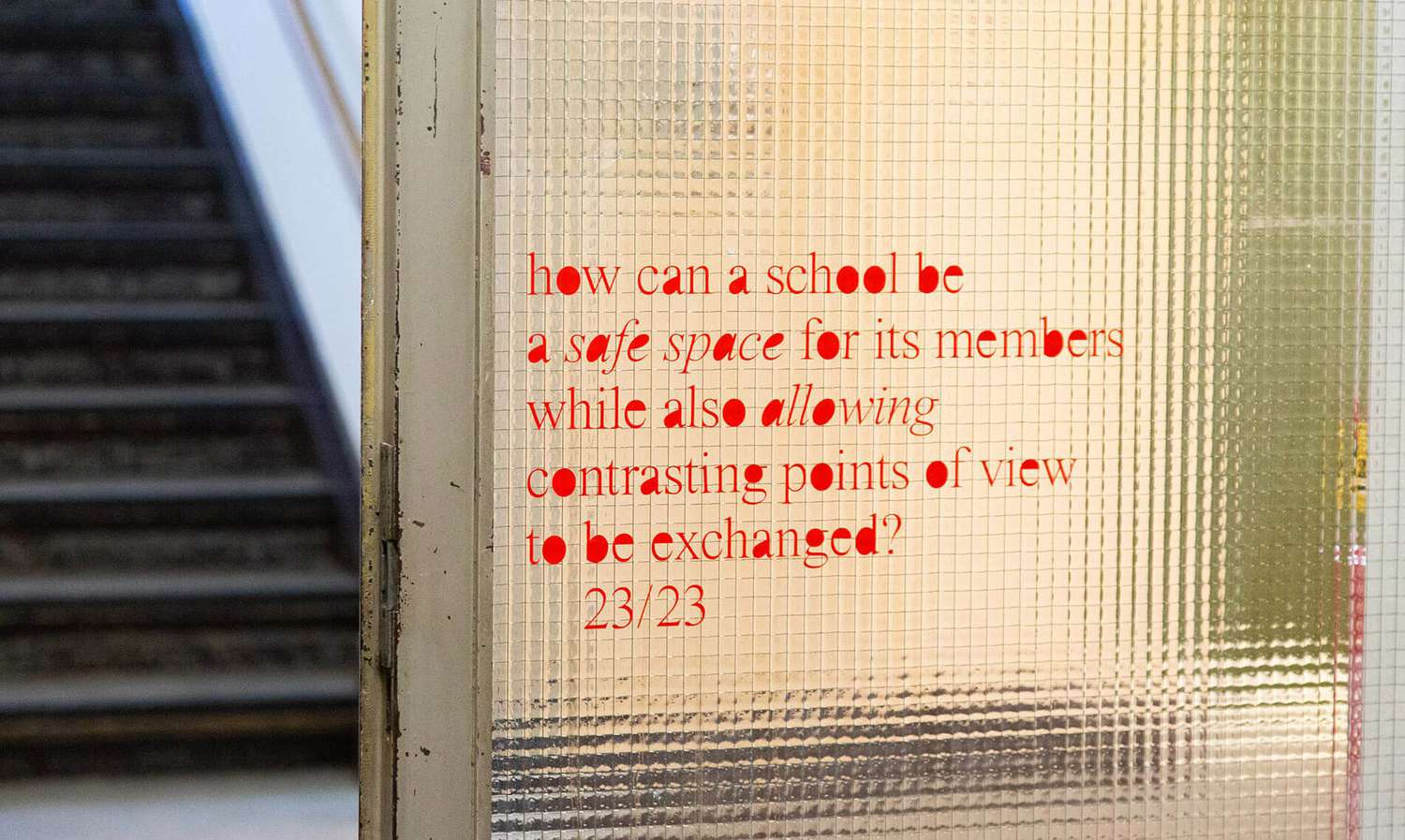

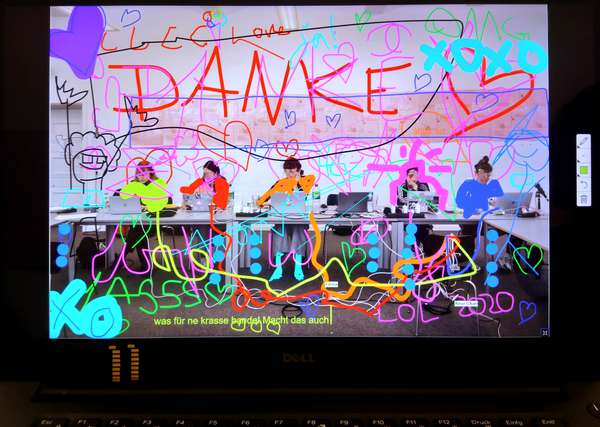













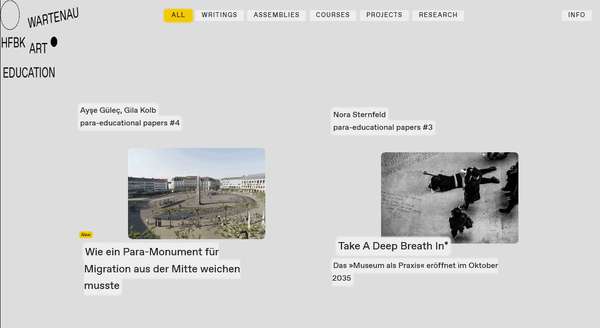
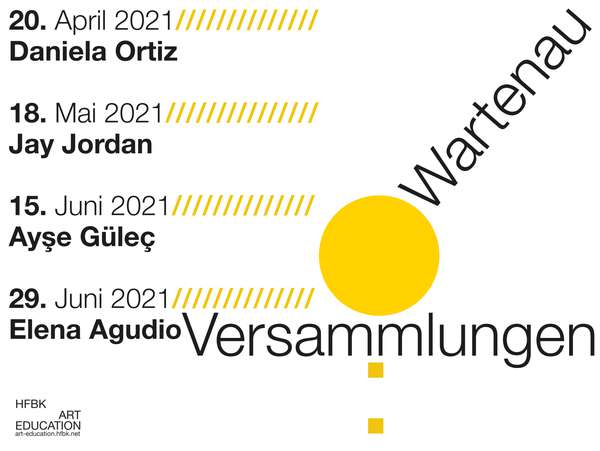





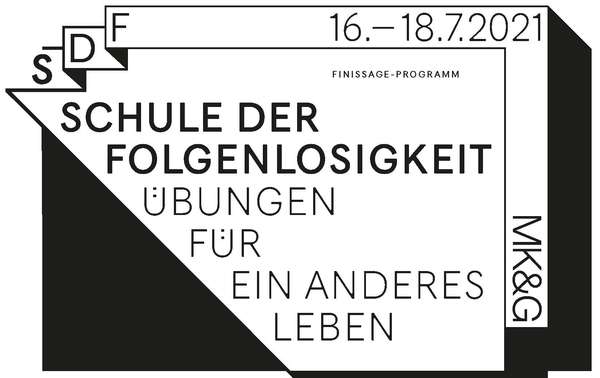






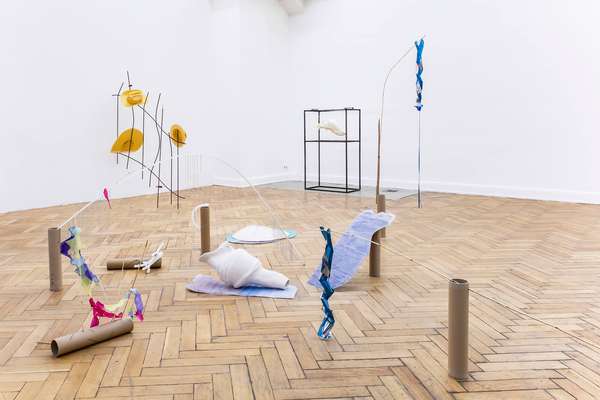



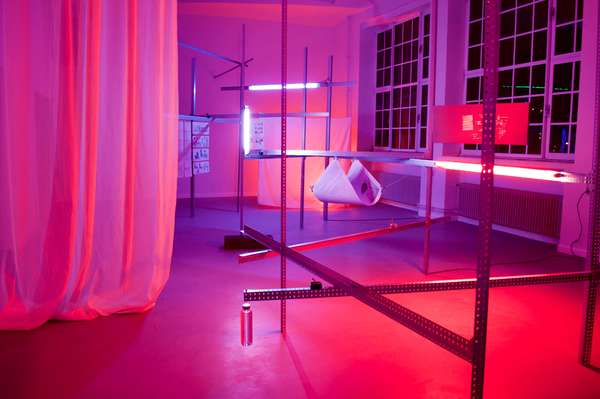
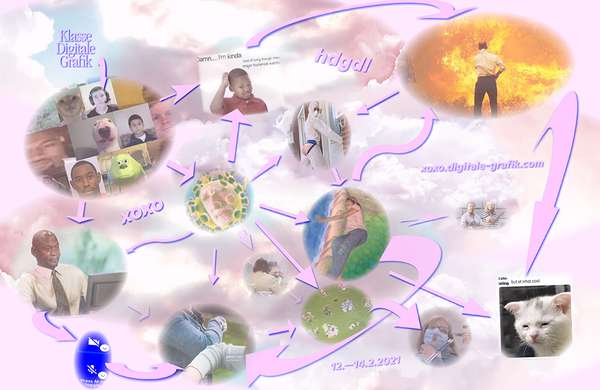



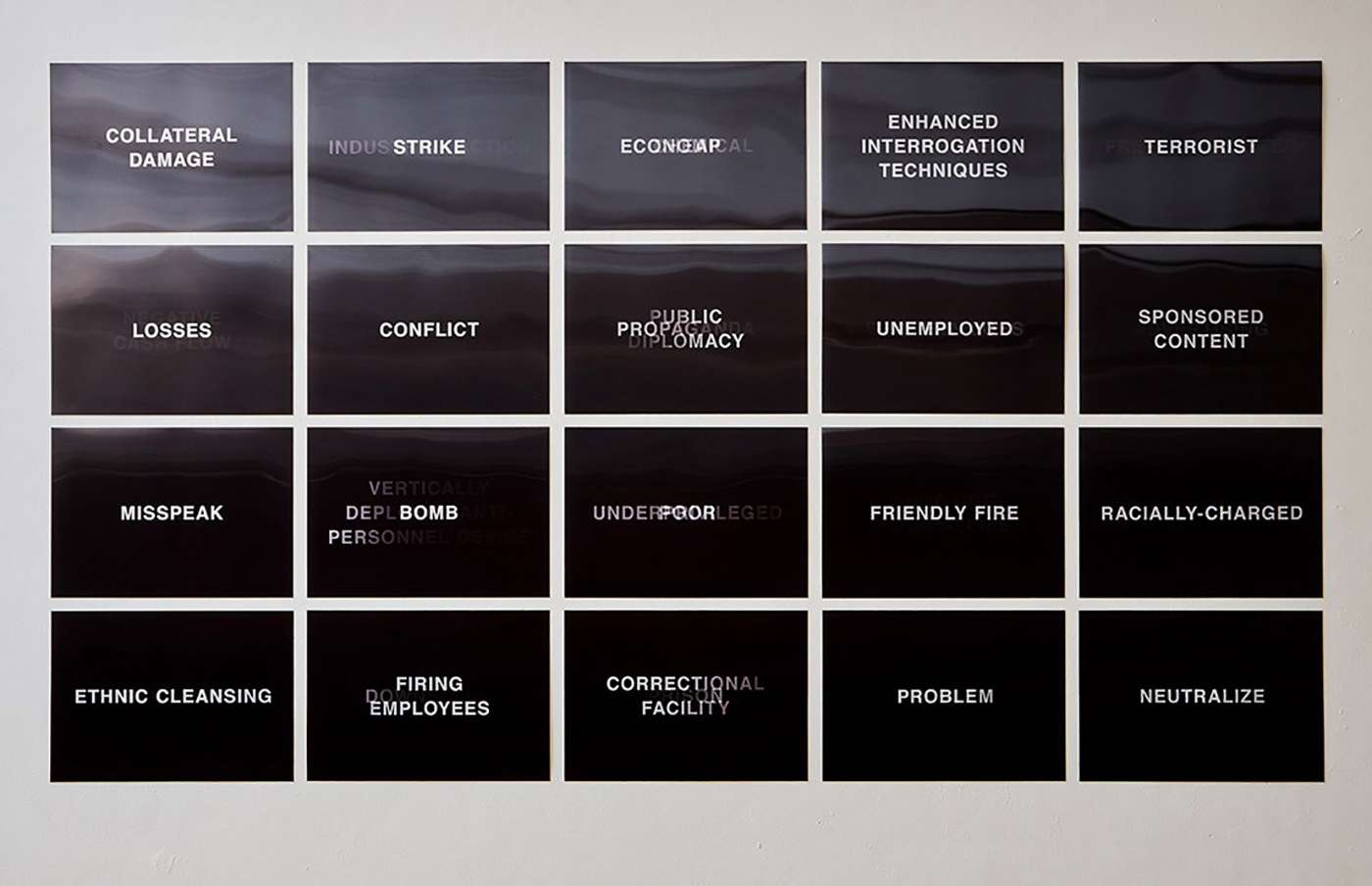










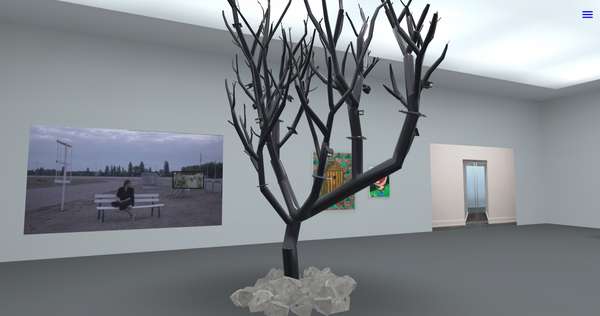





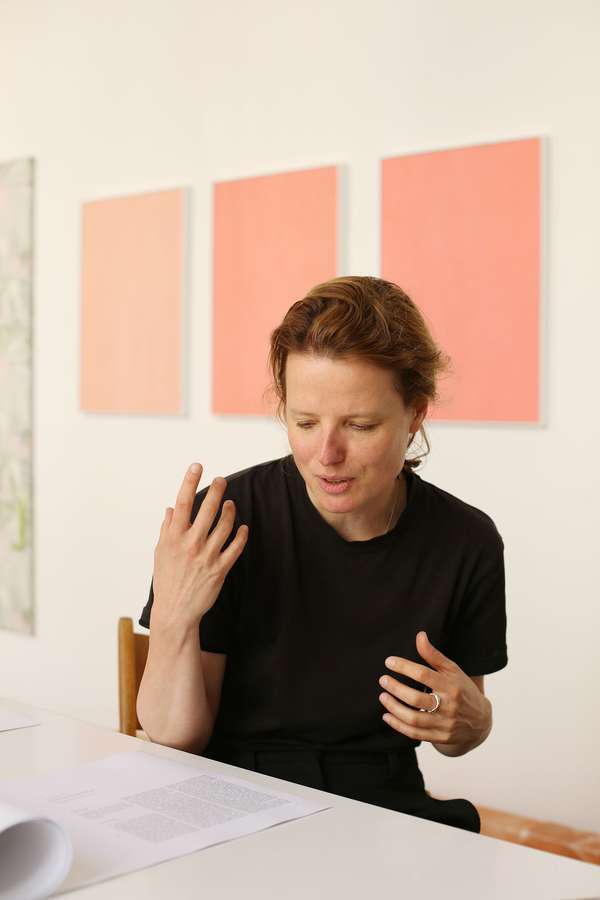

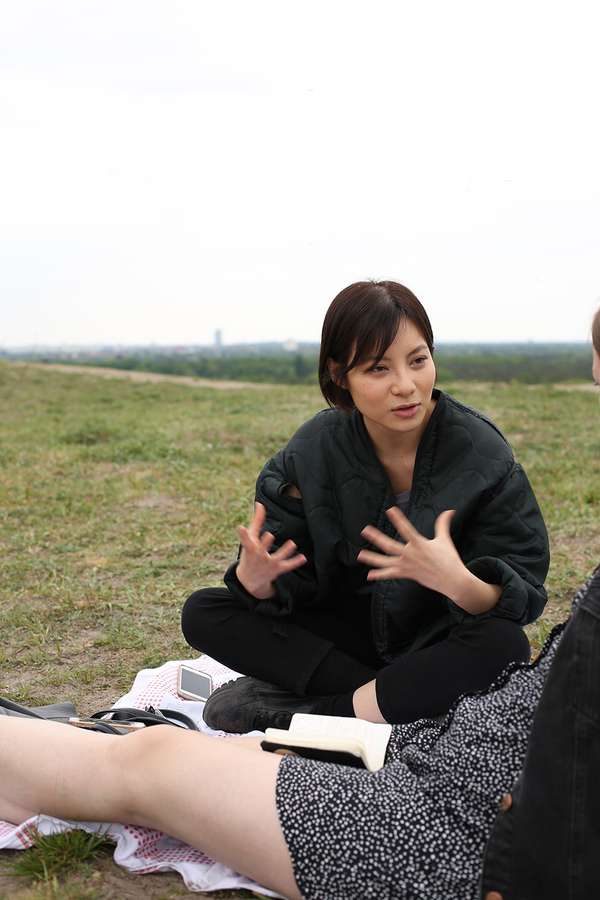










 The New Woman
The New Woman
 Opening of the 2024/25 semester centred on the new film house
Opening of the 2024/25 semester centred on the new film house
 Doing a PhD at the HFBK Hamburg
Doing a PhD at the HFBK Hamburg
 Summer of theory
Summer of theory
 Graduate Show 2024 - Letting Go
Graduate Show 2024 - Letting Go
 Finkenwerder Art Prize 2024
Finkenwerder Art Prize 2024
 Archives of the Body - The Body in Archiving
Archives of the Body - The Body in Archiving
 New partnership with the School of Arts at the University of Haifa
New partnership with the School of Arts at the University of Haifa
 Exhibition recommendations
Exhibition recommendations
 Annual Exhibition 2024 at the HFBK Hamburg
Annual Exhibition 2024 at the HFBK Hamburg
 How to apply: study at HFBK Hamburg
How to apply: study at HFBK Hamburg
 (Ex)Changes of / in Art
(Ex)Changes of / in Art
 Extended Libraries
Extended Libraries
 And Still I Rise
And Still I Rise
 No Tracking. No Paywall.
No Tracking. No Paywall.
 Let's talk about language
Let's talk about language
 Graduate Show 2023: Unfinished Business
Graduate Show 2023: Unfinished Business
 Let`s work together
Let`s work together
 Annual Exhibition 2023 at HFBK Hamburg
Annual Exhibition 2023 at HFBK Hamburg
 Symposium: Controversy over documenta fifteen
Symposium: Controversy over documenta fifteen
 The best is saved until last
The best is saved until last
 Festival and Symposium: Non-Knowledge, Laughter and the Moving Image
Festival and Symposium: Non-Knowledge, Laughter and the Moving Image
 Solo exhibition by Konstantin Grcic
Solo exhibition by Konstantin Grcic
 Art and war
Art and war
 Graduate Show 2022: We’ve Only Just Begun
Graduate Show 2022: We’ve Only Just Begun
 June is full of art and theory
June is full of art and theory
 Finkenwerder Art Prize 2022
Finkenwerder Art Prize 2022
 Nachhaltigkeit im Kontext von Kunst und Kunsthochschule
Nachhaltigkeit im Kontext von Kunst und Kunsthochschule
 Raum für die Kunst
Raum für die Kunst
 Annual Exhibition 2022 at the HFBK
Annual Exhibition 2022 at the HFBK
 Conference: Counter-Monuments and Para-Monuments.
Conference: Counter-Monuments and Para-Monuments.
 Diversity
Diversity
 Summer Break
Summer Break
 Live und in Farbe: die ASA Open Studios im Juni 2021
Live und in Farbe: die ASA Open Studios im Juni 2021
 Unlearning: Wartenau Assemblies
Unlearning: Wartenau Assemblies
 School of No Consequences
School of No Consequences
 Annual Exhibition 2021 at the HFBK
Annual Exhibition 2021 at the HFBK
 Semestereröffnung und Hiscox-Preisverleihung 2020
Semestereröffnung und Hiscox-Preisverleihung 2020
 Teaching Art Online at the HFBK
Teaching Art Online at the HFBK
 HFBK Graduate Survey
HFBK Graduate Survey
 How political is Social Design?
How political is Social Design?